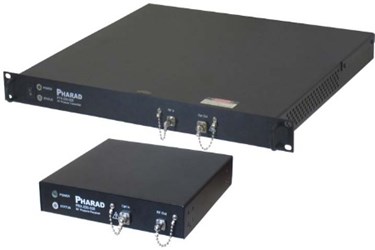Pharad Introduces 50 GHz RF Photonic Transmitter And Receiver

Pharad announced recently the latest additions to its family of high performance RF over Fiber products that meet the challenging requirements of recently modern RF systems. Used together, the PTX-030-500 RF photonic transmitter and PRX-030-500 RF photonic receiver support the fiber optic transport of RF signals over the ultra-wideband frequency range of 3 to 50 GHz.
“Pharad’s range of RF over fiber technology products are unique in the marketplace”, said Austin Farnham, President of Pharad. “They feature multi-octave bandwidths while also achieving low loss, low noise figure and high dynamic range performance. Our new 3 – 50 GHz RF photonic transmitter and receiver modules were developed in response to increasing customer demand for high performance RF over fiber links covering ultra-wideband operational bandwidths. Platforms comprising multiple radios and RF systems are increasingly becoming more commonplace and our products are ideal for supporting the fiber optic transport of a multitude of RF signals using a single hardware set.”
The transport of RF signals over optical fiber offers a number of benefits over conventional RF coaxial cables including reduced cabling size and weight, low loss over a wide RF bandwidth, and improved signal isolation. Pharad's line of RF over Fiber products support a diverse range of applications including wireless backhaul, antenna remoting, ultra-wideband analog communications, as well as RF distribution systems for defense platforms.
About Pharad, LLC
Located in Hanover, Maryland, Pharad, LLC is a customer focused company and technology leader in the development and manufacture of RF over Fiber systems for communications and defense applications and highly efficient, electrically small antennas. Pharad manufactures a range of RF over Fiber products that support the high performance fiber optic remoting and switching of RF signals. Pharad also creates innovative solutions for realizing difficult-to-engineer antennas for confined operational environments and very broadband applications. For more information, visit www.pharad.com.
Source: Pharad, LLC
